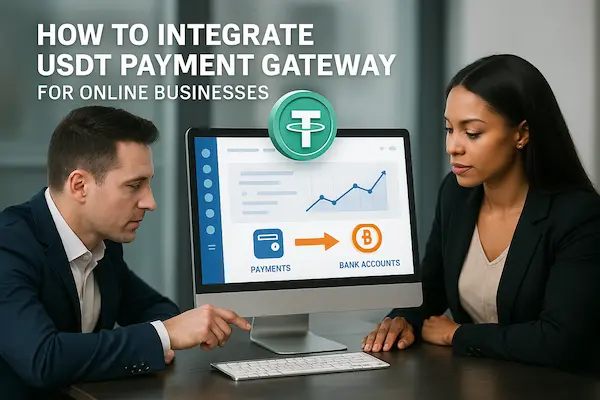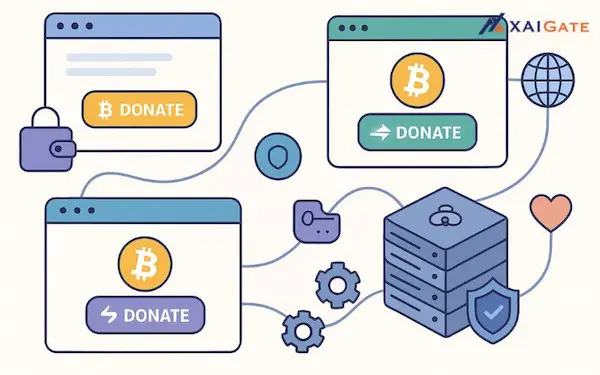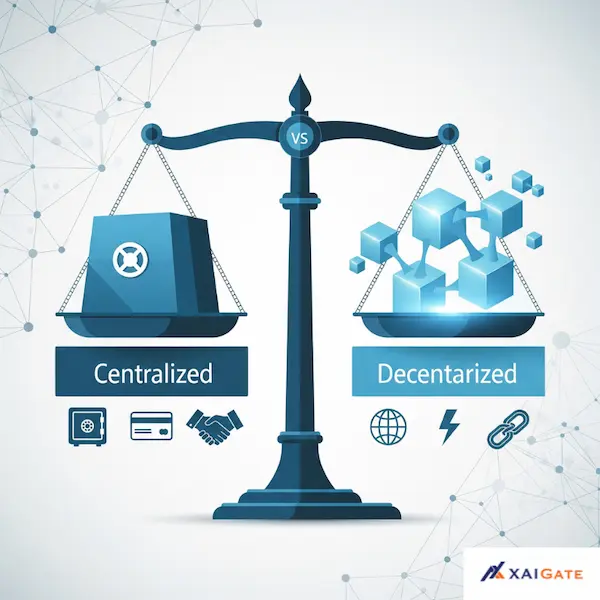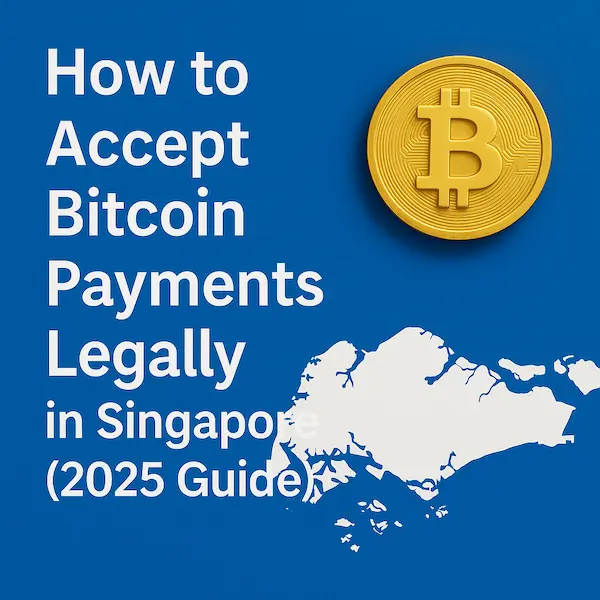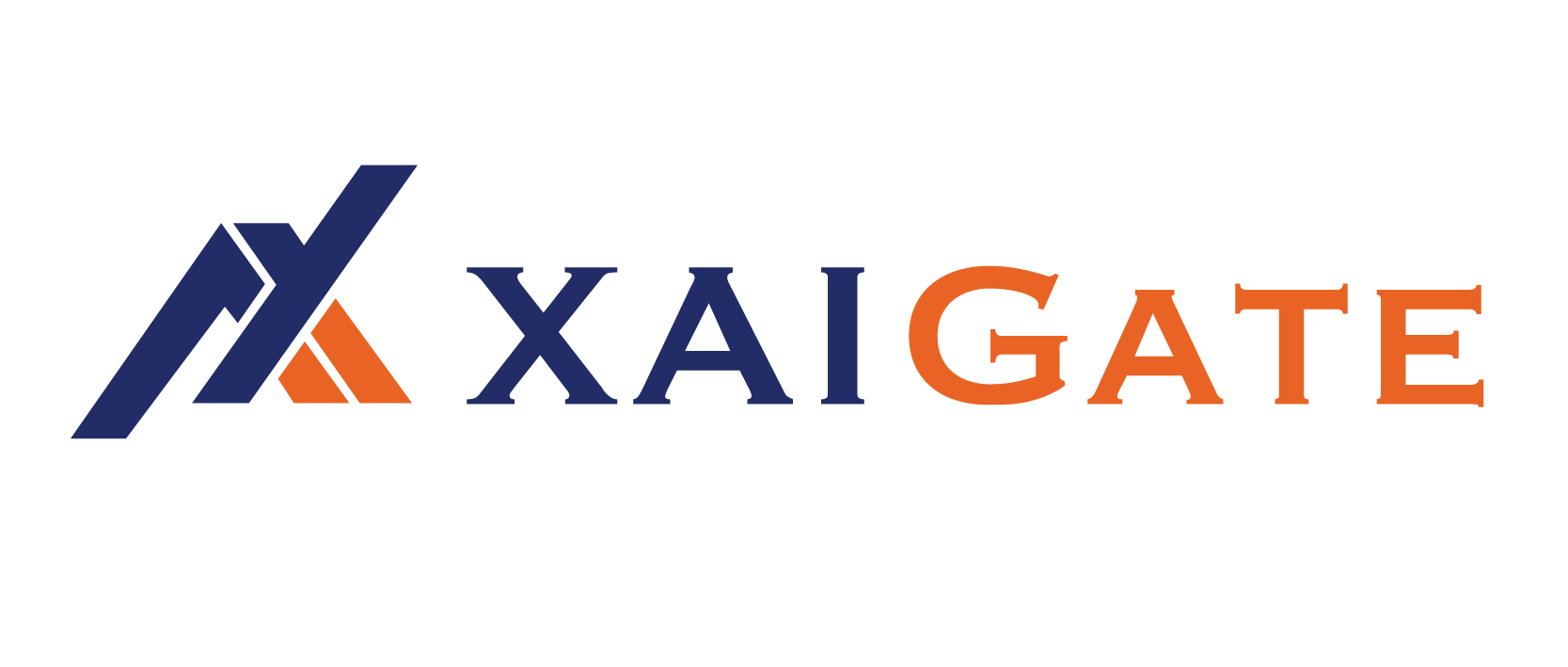Accepting USDT is no longer just a nice extra for crypto-friendly merchants. In many regions, customers now expect to pay with stablecoins that track the US dollar, while merchants want less volatility than BTC or ETH and faster cross-border settlement than banks. The challenge is that most teams are not sure where to start, which provider to choose, or what the real integration steps look like in production.
This guide gives you a clear, practical view of how to integrate USDT payment gateway in a way that respects security, compliance and day-to-day operations. You will see what to prepare on the business side, what developers need to implement, and how to keep the project manageable even if your team is small.
Contents
- 1 1. Key Takeaways: How to Integrate USDT Payment Gateway in 2026
- 2 2. What Is a USDT Payment Gateway and How It Works
- 3 3. Pre-Integration Checklist Before You Add a USDT Payment Gateway
- 4 4. How to Choose the Best USDT Payment Gateway Provider in 2026
- 5 5. How to Integrate USDT Payment Gateway Step by Step for Your Website or App
- 6 6. Developer Implementation Guide for USDT Payment Gateway Integration
- 7 7. Frontend and UX Best Practices for USDT Payment Checkout
- 8 8. Testing and Go Live Checklist for USDT Payment Gateway Integration
- 9 9. Risk Management, Security and Compliance After You Integrate USDT Payment Gateway
- 10 10. Accounting, Tax and Reconciliation for USDT Payments
- 11 11. Advanced Ways to Integrate USDT Payment Gateway for SaaS and B2B
- 12 12. Common USDT Payment Gateway Integration Mistakes to Avoid
- 13 FAQs: How to Integrate USDT Payment Gateway for Online Businesses
- 14 Conclusion: Turning USDT Payment Gateway Integration into a Competitive Edge
1. Key Takeaways: How to Integrate USDT Payment Gateway in 2026
Before you dive into code or dashboards, it helps to see the big picture. These points summarise what usually separates smooth USDT payment gateway integration from painful, risky rollouts.
1. USDT adds a new settlement rail, not a replacement for existing methods
A USDT payment gateway lets you add a dollar-linked crypto rail next to cards, bank transfers and local wallets. The main benefits are access to global customers, fewer chargebacks and potentially lower costs for cross-border payments. When you plan how to integrate USDT payment gateway, think about where it complements your current payment mix rather than replacing it.
2. Preparation matters more than code for safe USDT integration
Technical work is only one piece. You also need business rules (which products, which networks, which limits), plus legal and compliance checks on stablecoins, KYC and AML. When this groundwork is done early, integrating a USDT payment gateway becomes faster, safer and easier to explain to stakeholders.
3. A structured step-by-step approach reduces risk and confusion
Most successful projects follow a simple sequence: choose a provider, open and verify a merchant account, get sandbox keys, connect checkout, implement webhooks, test thoroughly, then go live with clear monitoring. Treating how to integrate USDT payment gateway as a checklist rather than a vague idea keeps everyone aligned.
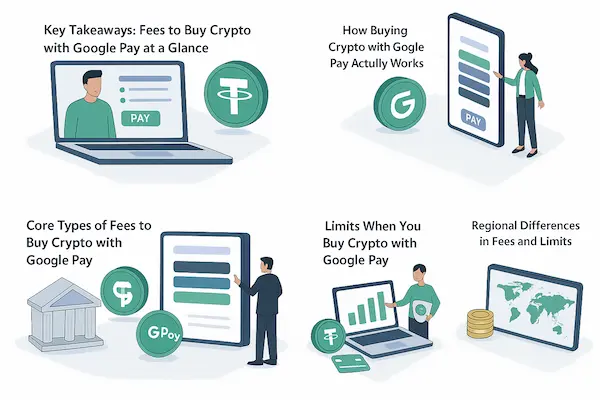
2. What Is a USDT Payment Gateway and How It Works
To make good decisions, you need a clear mental model of what a USDT payment gateway does behind the scenes. Once you understand the flow from customer wallet to your balance or bank account, it becomes easier to design a clean integration.
1. Definition of USDT payment gateway for online merchants
A USDT payment gateway is a service that lets your website or app accept payments in USDT and translates those payments into a format your systems can use. It creates payment orders, generates addresses or QR codes, watches the blockchain for incoming transfers and notifies your backend when funds are confirmed. Some gateways also convert USDT to fiat automatically and settle to your bank.
2. End-to-end flow of a USDT payment
A typical flow looks like this. At checkout, the customer selects USDT as the payment method. Your system calls the gateway API to create an order and receives a payment address or hosted payment page. The customer sends USDT on the specified network. The gateway detects the transaction, waits for the required confirmations, then calls your webhook with the final status. Your backend marks the order as paid and triggers fulfilment.
3. Why supported networks (TRC20, ERC20 and others) matter
USDT exists on several blockchains, each with its own fees and speed. TRC20 USDT on Tron is popular when low network costs and quick confirmations matter. ERC20 USDT on Ethereum may be preferred for DeFi integrations but usually has higher gas fees. When you decide how to integrate USDT payment gateway, you should define which networks you support, how you present them in checkout and what you do if a customer sends USDT on the wrong chain.
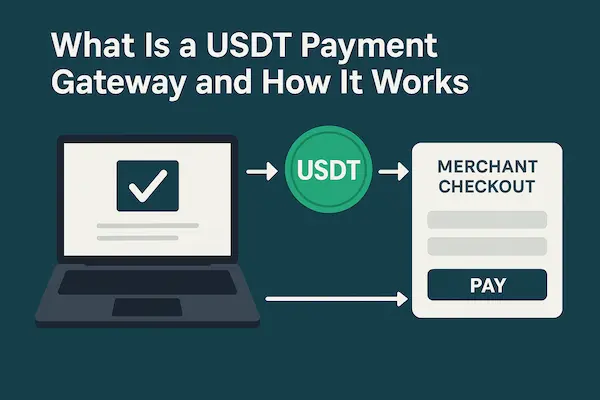
Table 1: Comparison of USDT Payment Gateway Integration Options
| Integration option | Description | Technical effort | Control & customization | Time to launch | Typical business profiles |
|---|---|---|---|---|---|
| Ready-made plugin | Install a plugin for your CMS or cart and connect it to a USDT gateway. | Low – mostly configuration | Limited to plugin settings and hooks | Fast – from a few hours to 1–2 days | Small stores, SaaS prototypes, merchants with standard checkout |
| Hosted checkout page | Redirect customers to a hosted USDT payment page provided by the gateway. | Low to medium – some integration | Moderate – branding and UX mainly controlled by provider | Fast – usually within 1–3 days | Merchants without strong dev team, businesses needing quick launch |
| Custom API integration | Direct API integration into your own checkout and backend workflows. | High – requires developers | Very high – full control over UX, routing, rules, automations | Slower – from several days to weeks | Scaled SaaS, marketplaces, enterprises with complex requirements |
| Hybrid approach | Combine plugins or hosted pages with selected custom API endpoints. | Medium – mix of config and code | High – extend standard flows with custom logic and reporting | Medium – staged rollout | Growing businesses that start simple but plan deeper integration |
3. Pre-Integration Checklist Before You Add a USDT Payment Gateway
Before a developer writes a single line of code, your business, legal and operations teams should align on a few basics. Most painful stories around USDT payment gateway integration come from skipping this stage and discovering problems after you are live.
1. Business use cases and basic rules for USDT payments
Write down why you want to accept USDT and where it fits. Common use cases include digital goods, cross-border B2B invoices, deposits or top-ups and high-value payments where card chargebacks are too risky. Define which products can be paid with USDT, minimum and maximum ticket sizes and which markets you target. This structure makes later decisions about networks, fees and limits much easier.
2. Legal, compliance and licensing considerations
Stablecoin payments sit between traditional payments and crypto regulation. You should confirm how your jurisdiction classifies USDT, whether you are simply a merchant using a regulated gateway or could be treated as a virtual asset service provider, and what KYC and AML checks you need on your own customers. For larger or multi-country businesses, it is worth getting formal legal advice before scaling your USDT payment gateway integration.
3. Tax, accounting and reporting impact of USDT receipts
Finance teams need a plan for how to treat USDT. Agree on how you value USDT in your books, whether you will hold it or convert it quickly, how you track any gains or losses and which reports you require from the gateway. Sorting this out early avoids months of cleanup work later, when volume has already grown but records are incomplete.
4. Minimum technical skills and environments
Even with plugins and low-code tools, you still need someone who can read API docs, understand webhooks and work with your checkout or e-commerce backend. You also need at least a staging or sandbox environment and a basic plan for logging and monitoring. If you do not have this, consider starting with a simple hosted checkout flow rather than a deep custom USDT gateway integration.
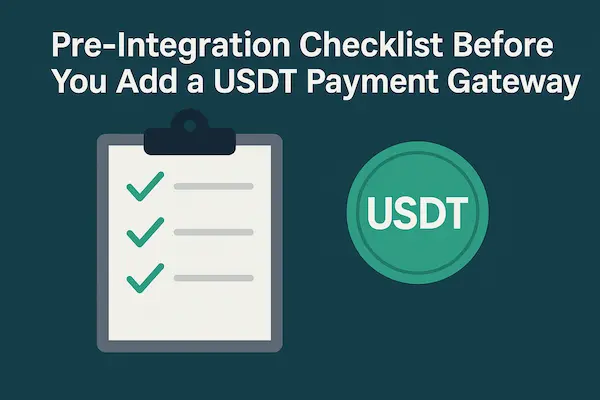
4. How to Choose the Best USDT Payment Gateway Provider in 2026
With your internal checklist ready, the next decision is which gateway to trust. Many providers advertise similar features, so you need criteria that go beyond marketing pages.
1. Core features and capabilities to look for
At minimum, a solid USDT payment gateway should support the networks you care about, provide clear documentation and SDKs, offer a sandbox environment, send webhook or IPN notifications for status updates and expose dashboards and exports for finance and operations. If any of these elements is missing or weak, integration and ongoing use will be much harder.
2. Custodial versus non-custodial models
Most providers follow either a custodial or non-custodial model. Custodial gateways hold customer funds and often offer automatic conversion to fiat, which is convenient but adds counterparty risk. Non-custodial gateways route funds to wallets you control or use smart contracts, reducing that risk but requiring more responsibility and technical care on your side. When you evaluate how to integrate USDT payment gateway, your risk appetite will push you toward one of these models.
3. Pricing, spreads and hidden costs
Headline fees rarely tell the whole story. Ask about per-transaction fees, extra charges for certain networks or regions, and FX spreads if the gateway converts USDT to fiat. Two gateways with the same published fee can differ a lot once spreads and minimums are included. Compare total cost for realistic monthly volumes, not just one small test payment.
4. Security, uptime, support and compliance signals
Payment infrastructure should be boring and reliable. Look for evidence of security audits, clear key management practices, public status pages, realistic SLAs, responsive support and transparent company and licensing details. If you cannot find basic information about who runs the gateway and how it is regulated, treat that as a red flag before committing your USDT payment volume.
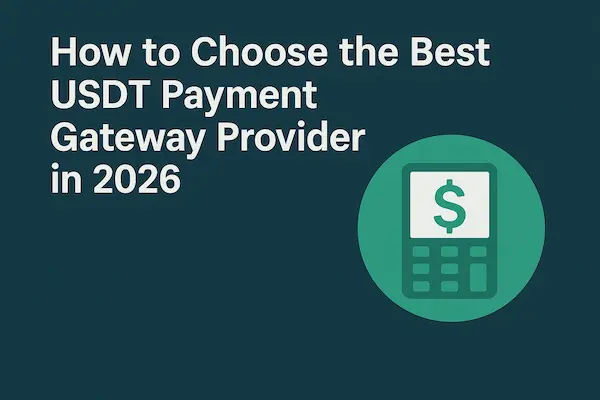
Table 2: Key Criteria When Choosing a USDT Payment Gateway Provider
| Criteria | Questions to ask | Strong provider looks like | Warning signs to avoid |
|---|---|---|---|
| Supported networks and currencies | Which USDT networks and fiat currencies are supported for my main markets? | Offers major networks (e.g., TRC20, ERC20) and relevant fiats for your customers | Only one network, unclear roadmap, or missing key currencies |
| Custodial vs non-custodial model | Who holds customer funds and where are they stored before settlement? | Clear model, audited custody, options for auto-conversion and direct wallet settlement | No transparency on wallets, licensing, or how funds are managed |
| Fees, spreads, and hidden costs | What are per-transaction fees, spreads, minimums, and extra network charges? | Transparent pricing, realistic network fee handling, low and predictable total cost | Very low headline fee but unclear spreads, special charges, or surprise monthly costs |
| Security and uptime | How do you protect keys and ensure uptime for payment APIs and webhooks? | Documented security controls, audits, status page, uptime history and incident reports | No public security information, frequent downtime, vague answers about incidents |
| Compliance and licensing | Which jurisdictions are you licensed in and how do you handle KYC/AML? | Operates under clear regulatory regimes with defined KYC/AML standards and policies | No legal entity details, unclear regulator, weak or inconsistent compliance language |
| Sandbox and developer experience | Is there a full sandbox, SDKs, and clear docs for my tech stack? | Rich documentation, SDKs, quickstart guides, sample code, and stable sandbox environment | Outdated docs, missing examples, no sandbox or unreliable test environment |
| Reporting and reconciliation | What reports and exports are available for finance and tax teams? | Daily/periodic reports, API exports, clear mapping between orders, hashes, and payouts | Only basic dashboard views, no exports, or inconsistent transaction identifiers |
| Support and SLAs | How fast do you respond to issues and what SLAs or support tiers exist? | Multiple support channels, realistic SLAs, named contacts for higher volumes | Email-only support, no response guarantees, or slow replies during incidents |
5. How to Integrate USDT Payment Gateway Step by Step for Your Website or App
Once you have chosen a provider, you can move through a clear series of steps. Thinking in stages helps you keep the project under control.
1. Create and verify your merchant account
Start by opening a merchant account and completing the KYC process. Provide company details, website information and ownership data as requested. Finish this fully before you invest time in development; otherwise you risk delays or frozen payouts when you go live.
2. Obtain API keys and sandbox credentials
After approval, log in to the dashboard and generate sandbox API keys and, separately, production keys. Store them in a secure secrets manager, not in plain text or source code. Many gateways also give you a webhook signing secret; you will need this later to verify callbacks.
3. Configure networks, currencies and settlement options
Next, configure how USDT payments should behave. Choose which networks to support, decide whether you will hold USDT or auto-convert, set your settlement currency and link any bank accounts if needed. Define minimum and maximum transaction sizes so your USDT payment gateway integration aligns with your risk and business rules.
4. Connect checkout and display USDT as a payment option
Update your checkout so USDT appears as a clear payment method. When customers choose it, your backend should create a payment order via the gateway API and show the returned address, QR code or hosted page. Display the amount in USDT and specify the network to reduce mistakes.
5. Implement webhooks and update order status
Finally, set up a webhook endpoint in your system and register its URL in the gateway dashboard. In your code, verify signatures or secrets on inbound requests, then update order status when payments are confirmed, underpaid, overpaid or expired. This closes the loop between the gateway and your fulfilment processes. When you follow these steps, how to integrate USDT payment gateway stops being guesswork and becomes a repeatable process your team can maintain.
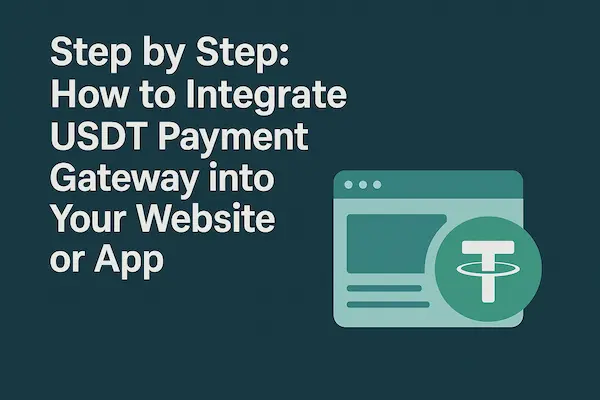
6. Developer Implementation Guide for USDT Payment Gateway Integration
From a developer perspective, how to integrate USDT payment gateway is mainly about a small set of reliable calls and event handlers, not hundreds of endpoints.
1. Core API patterns for USDT payment orders
Most projects only need a handful of operations: creating payment orders, checking their status, listing payments for reconciliation and sometimes retrieving rates or balances. Implement these with careful error handling and timeouts, and log both requests and responses so you can debug issues later.
2. Robust webhook handling and idempotency
Your webhook handler should be idempotent and defensive. Always verify signatures, check payloads against your own database and safely handle retried or duplicated events. Log all incoming events with timestamps and keep enough history to troubleshoot customer questions about specific USDT transactions.
3. Updating internal systems and exposing clear payment history
When a payment is confirmed, your backend should mark the order as paid and trigger fulfilment flows. For failed or expired payments, clear any reserved stock or pending access. In your admin tools, expose clear payment history with order IDs, gateway IDs and transaction hashes so support teams can answer questions quickly.
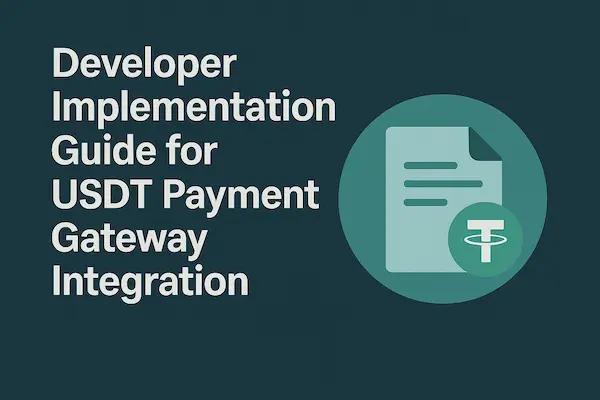
how to integrate USDT payment gateway into your website or app diagram7. Frontend and UX Best Practices for USDT Payment Checkout
A clean, simple checkout makes customers more willing to choose USDT and reduces support tickets.
1. Presenting USDT clearly alongside existing payment methods
Show USDT next to your usual methods with a simple label such as “USDT (stablecoin)” and, if useful, the main networks you support. Avoid hiding it under multiple clicks or technical labels. A short tooltip or help link can explain who should use this option.
2. Reducing user errors with conversion, QR codes and network labels
If users shop in fiat, show the approximate USDT amount they will pay and how long the rate is valid. Provide a QR code and copy buttons for the address and make the required network very clear. These small touches can dramatically reduce wrong-network or wrong-amount payments in your USDT payment gateway integration.
3. Setting expectations about confirmations and fees
Use simple language to explain how long USDT payments usually take to confirm and that network fees are paid to the blockchain, not to you. A short FAQ or help panel linked from checkout often answers most questions before they reach support.
8. Testing and Go Live Checklist for USDT Payment Gateway Integration
Structured testing turns your integration from a prototype into a reliable payment flow.
1. Essential sandbox tests before you accept real USDT
In sandbox or testnet mode, run through successful payments, underpayments, overpayments and expired invoices on each supported network. Confirm that your system updates order status correctly and that notifications and emails reflect the final outcome.
2. Testing edge cases and monitoring behaviour
Simulate wrong networks, low gas fees and webhook failures where possible. Check that logs capture enough information to investigate issues and that your system behaves predictably even when payments are delayed or cancelled.
3. Final checks before switching to live keys
Before going live, confirm that production keys and webhook URLs are correctly set, SSL certificates are valid, firewall rules allow traffic from the gateway and backups exist for critical configuration. Make sure someone on your team receives alerts if API errors or webhook failures spike after launch.
9. Risk Management, Security and Compliance After You Integrate USDT Payment Gateway
After you integrate USDT payment gateway and go live, the real work is keeping it safe, compliant and predictable. Good risk management turns a new payment rail into a stable, long term channel instead of a source of surprises.
1. Wallet security and key management
If you hold USDT yourself, treat wallets like bank accounts. Use hardware wallets or reputable custody solutions, restrict access to production wallets and separate hot wallets for daily operations from cold storage reserves. Even when the gateway is custodial, make sure you understand its key management, security audits and incident response process rather than assuming “the provider will handle it.”
2. Basic transaction monitoring and sanctions controls
Work with your compliance team to define simple rules for high-risk countries, unusual payment volumes and suspicious behaviour. Make sure customer data and, where needed, on-chain activity are screened against sanctions and watch lists, and that alerts go to someone who can act. This gives you a clear story if regulators, banks or partners ever question your USDT payment gateway integration.
3. Preparing for incidents before they happen
Write down what counts as a serious incident, who must be notified and how you will communicate with customers if payments are delayed or paused. Keep contact details for your gateway and key internal owners in one place. Running at least one tabletop exercise a year, walking through a fake outage or security issue, helps your team react calmly and consistently when a real problem appears.
10. Accounting, Tax and Reconciliation for USDT Payments
Clean financial data turns your USDT project from an experiment into a stable part of your payment stack. From a finance perspective, understanding how to integrate USDT payment gateway into your accounting and tax process is just as important as the technical build.
1. Policy on holding or converting USDT
Decide whether you will usually hold USDT, convert it quickly to fiat, or use a mixed strategy. This choice affects your exposure to stablecoin risk, FX gains and losses and the complexity of your accounting. Document the policy so everyone in finance and operations follows the same rules.
2. Using gateway reports for settlement and reconciliation
Most USDT payment gateways offer daily or periodic settlement reports. Work with finance to reconcile these reports with your internal orders, transaction hashes and any bank settlements. Automating part of this process reduces manual errors and audit headaches.
3. Treating USDT correctly in your books
Agree with your accountant on how you value USDT, which reference rates you use and how small gains or losses are recorded over time. Consistent treatment across periods makes audits smoother and gives you a clearer picture of how your USDT payment gateway integration is performing financially.
11. Advanced Ways to Integrate USDT Payment Gateway for SaaS and B2B
Once the basics are stable, you can extend how to integrate USDT payment gateway into more advanced SaaS and B2B use cases that match your business model.
1. Subscriptions and recurring billing using USDT
For SaaS businesses, a USDT payment gateway can be used to issue recurring invoices or to top up a customer balance that renews their subscription. Be clear in your UX and emails about how renewals work and what happens if the balance runs low, so customers are not surprised.
2. USDT invoices for cross-border B2B payments
B2B merchants can generate invoices in USDT with payment links and network details included. This can reduce friction for international customers and cut banking fees and delays. Clear invoice templates and internal procedures make this extension of your USDT payment gateway integration easier to manage.
12. Common USDT Payment Gateway Integration Mistakes to Avoid
You can save time and stress by avoiding the mistakes other teams have already made.
1. Treating all USDT networks as identical
Ignoring differences between networks can lead to high fees, slow confirmations and confused customers. Choose one or two primary networks, explain why you recommend them and configure your gateway accordingly.
2. Weak secret management and no monitoring
Hard-coding API keys, skipping webhook verification and running without logs or alerts are invitations to trouble. Use a secrets manager, verify signatures and monitor errors from day one of your USDT payment gateway integration.
3. Skipping compliance and support training
Rushing to go live without involving compliance, tax and support teams often leads to rework. A short alignment session and a simple internal FAQ for staff can prevent many future issues.
FAQs: How to Integrate USDT Payment Gateway for Online Businesses
1. What is the easiest way to integrate a USDT payment gateway?
Pick a gateway with ready-made plugins or simple APIs, connect your wallet, choose supported networks and currencies, then embed their checkout into your site or app.
2. How long does a typical USDT payment gateway integration take?
For plugins, you can be live in a few hours; custom API work with testing and approvals usually takes from a few days to a couple of weeks.
3. Do I need a developer to integrate a USDT payment gateway?
You can handle basic plugin setup without code, but you’ll need a developer for custom flows, webhooks, reconciliation and security hardening.
4. Which USDT networks (TRC20, ERC20, etc.) should my business support?
Most merchants start with a low-fee chain like TRC20 plus one widely used chain such as ERC20, based on customer demand and typical transaction size.
5. How do I keep my USDT payment gateway integration secure and compliant?
Protect API keys in a secrets manager, use HTTPS everywhere, enable 2FA on dashboards and follow your local KYC, AML and tax rules.
6. Can I test USDT payments in sandbox before going live?
Yes. Good gateways provide sandbox keys and test coins so you can simulate full payment flows, webhooks and error cases without risking real funds.
7. How should I handle refunds and disputes with USDT payments?
Define clear rules: when to refund in USDT, when to convert to fiat, who approves payouts and how you record each case in your support and finance systems.
8. What should I monitor after launching a USDT payment gateway?
Track approval rate, fee level, time to settle, fraud alerts and customer feedback, then adjust networks, limits and UX to improve results over the first few months.
Conclusion: Turning USDT Payment Gateway Integration into a Competitive Edge
Integrating a USDT payment gateway is not just a technical project. It is a strategic decision about how your business accepts money from customers who may not share your local banks or even your currency. By treating how to integrate USDT payment gateway as a structured process, you can manage risk while opening your doors to a wider global audience.
Start with clear business and compliance rules, choose a reliable provider and build a simple, well tested integration that your team can maintain. Keep finance, legal and support in the loop, monitor behaviour after launch and refine your setup over time. Done well, USDT payments become a stable, predictable rail that supports your growth in 2026 and beyond, instead of a fragile experiment bolted onto your checkout. When your team understands how to integrate USDT payment gateway from end to end, USDT becomes a reliable payment rail instead of an experiment bolted onto your checkout.
Quick Summary: USDT Payment Gateway Integration in 2026
| Area | What you should do | Why it matters for your business |
|---|---|---|
| Integration approach | Start with plugin or hosted checkout, then move to custom API as volume grows. | Balances speed to market with long-term control and scalability. |
| Provider selection | Choose a licensed gateway with clear fees, security audits, and strong support. | Reduces compliance risk and unexpected costs, keeps payments running smoothly. |
| Networks and settlement | Support main USDT networks (e.g., TRC20) and define clear settlement rules. | Lowers fees, avoids clogged networks, and simplifies finance reconciliation. |
| Developer implementation | Use sandbox, SDKs, and webhooks; document flows for your dev and ops teams. | Cuts integration time, reduces bugs, and makes future changes easier. |
| Risk and compliance controls | Implement KYC/AML checks, fraud rules, and internal approval workflows. | Protects you from chargebacks, abuse, and regulatory headaches. |
| Testing and go-live | Run end-to-end tests: small live orders, refunds, and failure scenarios. | Ensures real customers can pay in USDT without broken flows or lost orders. |
| Monitoring and optimization | Track conversion rate, payment success, fees, and settlement delays. | Helps you fine-tune routing, fees, and UX to maximize profit and reliability. |
For daily updates, subscribe to XAIGATE’s blog!
We may also be found on GitHub, and X (@mxaigate)!

